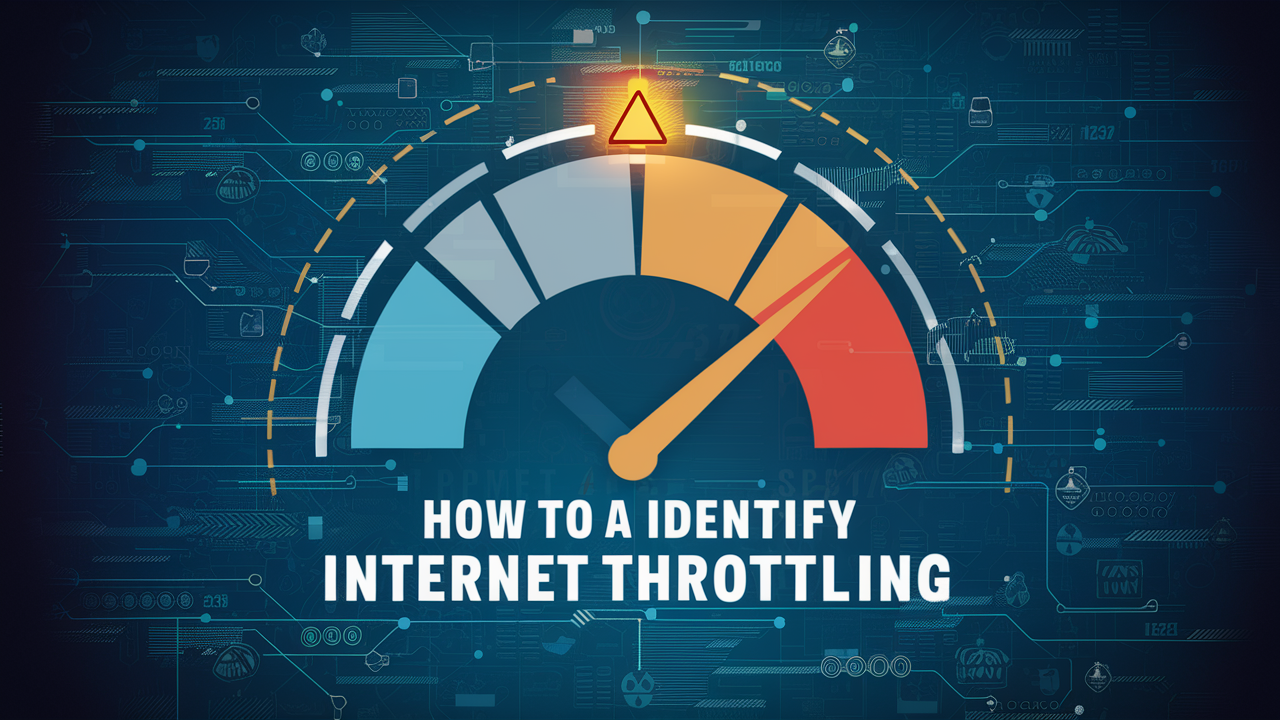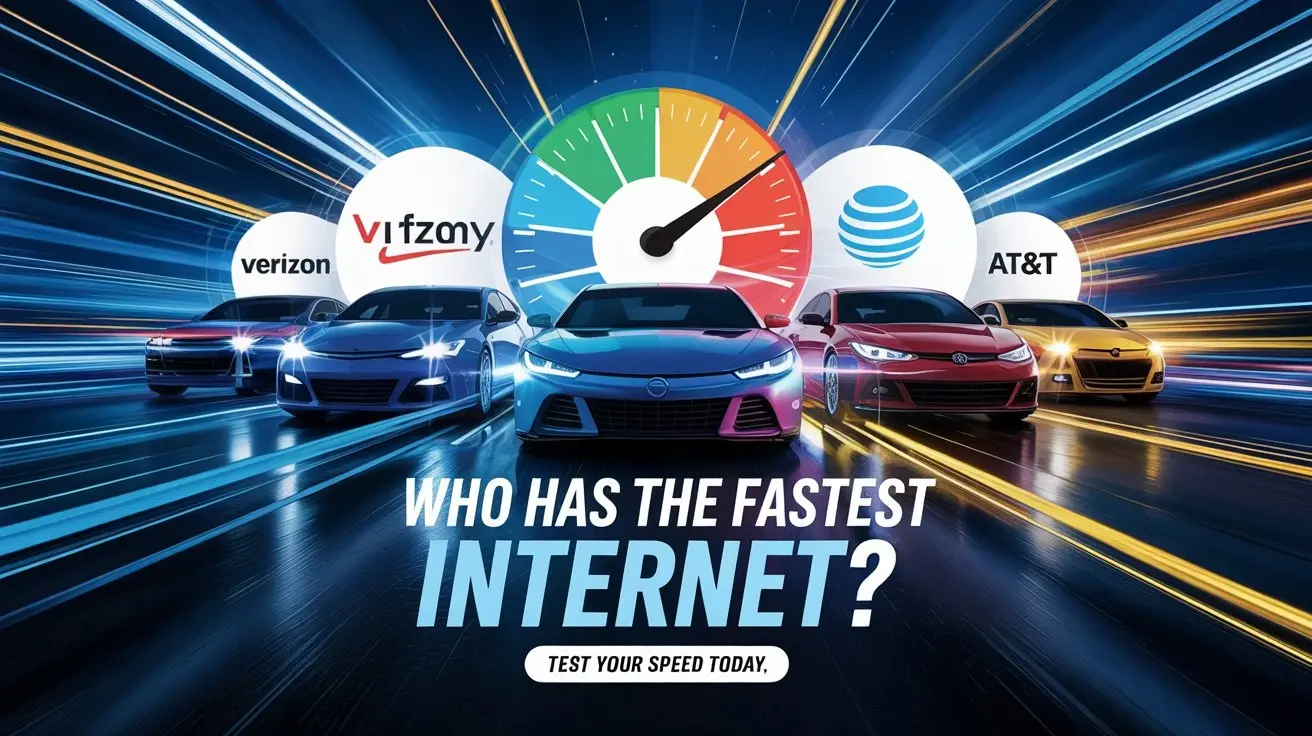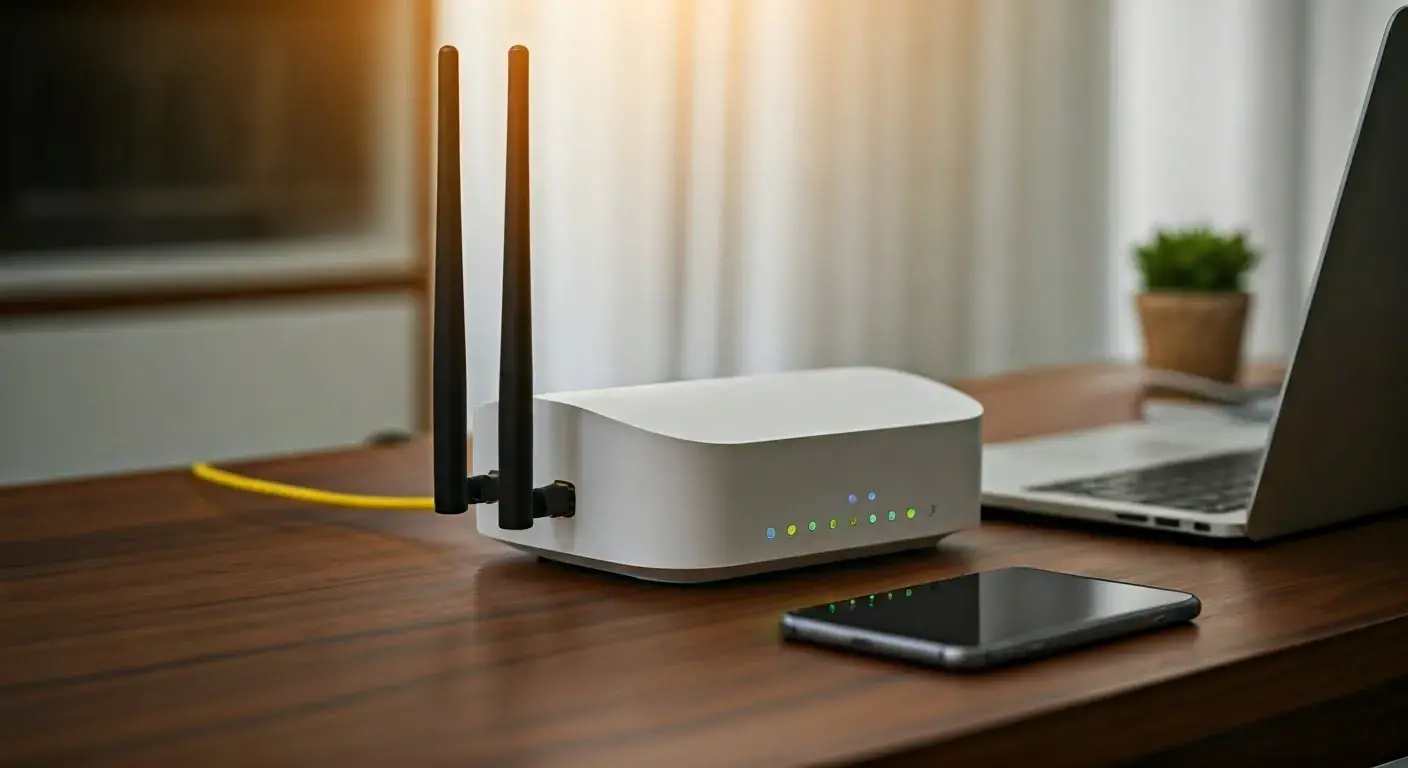How can I tell if someone is throttling my internet?

What is Internet Throttling?
Internet throttling is the intentional slowing down of your internet connection by your Internet Service Provider (ISP). This can manifest as reduced speeds for specific activities, at certain times, or after exceeding data caps, often impacting streaming, gaming, and large downloads. Understanding its signs is crucial for maintaining a consistent online experience.
Why Do Internet Providers Throttle Internet?
Internet Service Providers (ISPs) employ throttling for several strategic reasons, primarily related to network management and business models. While they often cite network congestion as the main culprit, other factors also play a significant role. Understanding these motivations can shed light on why your connection might be slower than expected.
Network Congestion Management
This is the most commonly cited reason for throttling. During peak hours, when a large number of users are online and consuming bandwidth simultaneously, the network can become congested. To ensure a baseline level of service for all subscribers and prevent a complete network collapse, ISPs may slow down the speeds of the heaviest users or those engaging in bandwidth-intensive activities. This is akin to traffic management on a highway; during rush hour, lanes might be restricted to manage flow.
Data Cap Enforcement
Many internet plans come with data caps, especially in areas with limited infrastructure or satellite internet. Once a user exceeds their allotted data allowance, ISPs may throttle their connection speed significantly to discourage further high data usage. This is a common practice for mobile data plans but is increasingly seen in fixed broadband as well, particularly with the rise of unlimited data plans that might have "fair usage" policies or speed reductions after a certain threshold.
Service Tier Differentiation
ISPs offer various internet plans with different speed tiers and price points. Throttling can be a way to ensure that customers who pay for higher-speed plans actually receive those speeds, while those on lower-tier plans experience the speeds they are paying for. Conversely, if a customer is consistently using more bandwidth than their plan suggests, an ISP might subtly throttle them to encourage an upgrade to a more expensive plan. This creates a tiered experience where higher spending equals better performance.
Content or Application Discrimination
In some cases, ISPs might throttle specific types of internet traffic or certain applications. This practice, known as Deep Packet Inspection (DPI), allows ISPs to identify and slow down bandwidth-hungry services like video streaming (e.g., Netflix, YouTube), peer-to-peer file sharing (e.g., BitTorrent), or online gaming. The rationale often given is to prioritize essential services or manage network load more granularly. However, this practice has been a subject of significant debate regarding net neutrality principles, as it can give ISPs the power to favor their own services or those of their partners over competitors.
Promotional Period Expiration
When you first sign up for an internet service, you might be offered a promotional speed that is higher than the standard speed for that plan. Once the promotional period ends, your speed might revert to a lower, standard speed. While not strictly throttling in the sense of intentional slowing of a service you're paying for at its advertised rate, it can feel like throttling if you weren't adequately informed about the speed reduction after the promotion. This is a common marketing tactic.
Network Upgrade and Maintenance
Occasionally, ISPs might temporarily throttle speeds in certain areas to manage network capacity during upgrades or maintenance. This is usually a temporary measure to ensure the stability of the network while improvements are being made. However, these periods should be communicated to customers, and speeds should return to normal afterward.
Legal and Regulatory Compliance
In some jurisdictions, ISPs may be required to manage their networks to ensure equitable access for all users, especially in situations of extreme congestion. This can involve implementing throttling policies to prevent a few users from monopolizing bandwidth and impacting the experience of others.
By understanding these reasons, you can better assess whether the slowdowns you're experiencing are legitimate network management practices, a consequence of your plan, or potentially something more deliberate and concerning.
Key Signs You Might Be Experiencing Internet Throttling
Detecting internet throttling can be tricky, as slow speeds can be caused by many factors. However, certain patterns and specific symptoms often point towards intentional speed reduction by your ISP. Recognizing these signs is the first step in diagnosing the problem and taking appropriate action. Here are the most common indicators:
Inconsistent Speeds at Different Times
One of the most telling signs is a significant and recurring drop in internet speed during specific times of the day, especially during peak hours (typically evenings and weekends). If your internet is blazing fast in the morning but crawls to a halt when you most want to use it, like streaming a movie after dinner, it's a strong indicator of network congestion management or throttling. A consistent speed test result that is significantly lower than your advertised speed, particularly during these peak times, is a red flag.
Slowdowns During Specific Activities
If you notice your internet speed plummets only when you engage in certain activities, it's a strong clue. For instance, if your web browsing is fine, but streaming high-definition video buffers constantly, or large file downloads take an unusually long time, your ISP might be throttling specific types of traffic. This is particularly true if these services are known to consume a lot of bandwidth, like Netflix, YouTube, or torrenting applications. A sudden drop in download or upload speeds specifically during these activities, while other internet tasks remain unaffected, is a key indicator.
Reduced Speeds After Exceeding a Data Threshold
Many internet plans, especially mobile plans and some fixed broadband plans, have data caps. If you've recently used a significant amount of data and then noticed a drastic slowdown in your internet speed, it's highly probable that your ISP is enforcing its data cap policy by throttling your connection. This is a very common practice for mobile carriers and satellite internet providers. Check your ISP's terms of service for any data limits or "fair usage" policies.
Buffering and Lag During Streaming and Gaming
Video streaming services like Netflix, Hulu, or Disney+ require a consistent and robust connection to deliver smooth playback. If you experience constant buffering, low video quality, or frequent interruptions during your favorite shows, it's a sign that your bandwidth might be limited. Similarly, online gamers often experience lag, high ping, and disconnects when their connection is throttled, as these activities are very sensitive to latency and consistent throughput. If these issues appear suddenly or consistently during prime time, throttling could be the cause.
Slow Download and Upload Speeds Compared to Advertised Speeds
While it's common for actual speeds to be slightly lower than advertised speeds due to various factors, a persistent and significant discrepancy is suspicious. If your plan advertises speeds of 100 Mbps download and you consistently get less than 50 Mbps, even during off-peak hours, it might indicate throttling. This is especially true if speed tests show your speeds are significantly lower than what other users on the same plan in your area report.
Sudden and Unexplained Slowdowns
If your internet speed has been consistently good for a long time and then suddenly becomes sluggish without any apparent reason (like new equipment, more devices, or a change in your usage habits), it warrants investigation. ISPs might implement new throttling policies or adjust network management strategies without explicit notification, leading to unexpected performance degradation.
VPN Usage Significantly Slows Down Your Connection
While using a Virtual Private Network (VPN) inherently reduces your internet speed due to encryption and routing, an excessive slowdown could indicate ISP throttling. Some ISPs may throttle VPN traffic specifically because it encrypts data, making it harder for them to identify and manage specific applications. If your speeds drop dramatically only when using a VPN, and this drop is far greater than the typical VPN overhead, it's a potential sign.
Your ISP's Own Services Work Fine, but Third-Party Services Don't
A more subtle but potent sign of throttling is when your ISP's own streaming services, if they offer any, perform flawlessly, while competing third-party services buffer or run at lower quality. This could suggest that the ISP is prioritizing its own traffic or deliberately slowing down rival services. This is a classic net neutrality concern.
By observing these patterns, you can gather evidence to determine if your internet connection is being throttled. The next step is to confirm these suspicions with testing.
How to Test for Internet Throttling: A Step-by-Step Guide
Identifying internet throttling requires a systematic approach, combining various testing methods to gather conclusive evidence. Simply running one speed test might not be enough, as speeds can fluctuate. Here’s a comprehensive guide to help you test if your ISP is throttling your connection.
Step 1: Understand Your Advertised Speed
Before you begin testing, know exactly what internet speed you are paying for. Check your contract or your ISP's website for the advertised download and upload speeds for your specific plan. This will be your benchmark for comparison.
Step 2: Perform Baseline Speed Tests
Run multiple speed tests using reputable online tools. It's crucial to perform these tests under different conditions:
- At Various Times of Day: Test during peak hours (e.g., 7 PM - 11 PM) and off-peak hours (e.g., early morning or late night). This helps identify if throttling occurs due to network congestion.
- On Different Devices: Test speeds on multiple devices (e.g., laptop, smartphone, tablet) connected via both Wi-Fi and Ethernet cable. This helps rule out device-specific issues.
- Wired vs. Wireless: Always test with a wired Ethernet connection directly to your router whenever possible. Wi-Fi can introduce its own variables. If your wired speeds are significantly lower than advertised, it's a stronger indicator of an ISP issue.
Recommended Speed Test Tools:
What to Look For: Compare your results to your advertised speeds. Consistent results significantly below your advertised speeds, especially during peak hours or for specific activities, are suspicious.
Step 3: Test Specific Activities
If you suspect throttling of certain applications, test those directly.
- Video Streaming: Use sites like Fast.com (powered by Netflix) to test your streaming speed. If Fast.com shows good speeds but streaming on other platforms is poor, it might indicate application-specific throttling.
- Large File Downloads: Download a large, reputable file from a known, fast server (e.g., a Linux distribution ISO from an official mirror). Time how long it takes and calculate the average download speed. Compare this to your advertised speed.
- Online Gaming: Use in-game ping monitors or external tools to check your latency (ping) and jitter. High and inconsistent ping during gameplay, especially when it wasn't an issue before, can be a sign of throttling.
Step 4: Use a VPN (Virtual Private Network)
A VPN encrypts your internet traffic, making it difficult for your ISP to see what you are doing online. This can help bypass content-based throttling.
- Subscribe to a Reputable VPN Service: Choose a VPN known for speed and reliability.
- Install and Connect: Install the VPN client on your device and connect to a server.
- Run Speed Tests: Repeat your speed tests (Step 2) while connected to the VPN.
- Compare Results:
- If your speeds are significantly better with the VPN than without it, especially for streaming or downloading, it's a strong indication that your ISP was throttling specific types of traffic.
- If your speeds are significantly slower with the VPN, this is expected due to encryption overhead. However, if the slowdown is extreme (e.g., 90% reduction), it might indicate the VPN server is overloaded or there's an issue with the VPN itself.
Important Note: Some ISPs may also throttle VPN traffic. If you see no improvement or even a degradation with a VPN, try different VPN protocols or servers. If speeds remain consistently low across multiple VPN servers, it might not be throttling, or the ISP is very aggressive in detecting and slowing VPNs.
Step 5: Check Your Data Usage
Log in to your ISP account portal and check your data usage for the current billing cycle. If you are close to or have exceeded your data cap, throttling is a very likely cause for slow speeds. Some ISPs provide tools to monitor this usage in real-time.
Step 6: Analyze Router and Modem Performance
While less likely to be direct ISP throttling, outdated or malfunctioning equipment can mimic throttling symptoms.
- Reboot Your Modem and Router: A simple restart can often resolve temporary glitches.
- Check Modem/Router Lights: Ensure all indicator lights are functioning correctly.
- Firmware Updates: Make sure your router's firmware is up to date.
- Direct Connection: Test your speed by connecting your computer directly to the modem, bypassing the router. If speeds improve dramatically, the router might be the bottleneck.
Step 7: Monitor Network Activity (Advanced)
For technically inclined users, network monitoring tools can provide deeper insights.
- Wireshark: This network protocol analyzer can capture and inspect traffic. While complex, it can help identify patterns in data flow that might indicate throttling.
- Online Tools: Some websites offer tools to analyze your connection's performance over time.
Step 8: Document Your Findings
Keep a log of all your speed tests, including the date, time, tool used, results (download, upload, ping), and the conditions under which the test was performed (e.g., wired, Wi-Fi, VPN on/off, time of day). This documentation is crucial if you decide to contact your ISP.
By systematically performing these tests, you can build a strong case to determine if your internet is being throttled. The next step is to know what to do with this information.
Troubleshooting Throttling and Improving Your Internet Speed
Once you suspect your internet is being throttled, or if you're simply experiencing consistently slow speeds, there are several steps you can take to troubleshoot the issue and potentially improve your connection. These range from simple adjustments to more involved actions.
1. Contact Your Internet Service Provider (ISP)
This should be your first and most direct course of action. Armed with the data you've collected from your speed tests and observations, approach your ISP with specific information.
- Present Your Evidence: Show them your speed test logs, highlighting the discrepancies between advertised speeds and actual speeds, especially during peak hours or specific activities.
- Inquire About Throttling Policies: Ask directly if they employ network management practices that could be affecting your speeds, such as data caps, peak hour throttling, or application-specific limitations.
- Discuss Your Plan: Confirm your current plan's advertised speeds and data limits. You might be on an older plan that is no longer competitive, or you may be consistently exceeding your data allowance.
- Request a Technician Visit: If equipment or line issues are suspected, ask for a technician to check your connection and equipment.
- Escalate if Necessary: If the initial support representative is unhelpful, ask to speak with a supervisor or a technical specialist.
2. Upgrade Your Internet Plan
If your current plan has insufficient bandwidth for your needs, or if you are consistently exceeding data caps, upgrading your plan might be the most straightforward solution. Consider plans with higher speeds or truly unlimited data if available. ISPs often offer introductory pricing on higher-tier plans, which can make the upgrade more affordable initially.
3. Optimize Your Home Network
Many speed issues can be resolved by improving your home network setup.
- Upgrade Your Router and Modem: Older modems and routers may not be capable of handling the speeds your ISP provides. Ensure your equipment is compatible with your ISP's network and supports the latest Wi-Fi standards (e.g., Wi-Fi 6/6E).
- Position Your Router Wisely: Place your router in a central, open location, away from obstructions like thick walls, metal objects, and other electronic devices that can cause interference (e.g., microwaves, cordless phones).
- Use Ethernet Cables: For devices that require the most stable and fastest connection (e.g., gaming consoles, smart TVs, desktop computers), use Ethernet cables instead of Wi-Fi. This bypasses potential Wi-Fi interference and signal degradation.
- Secure Your Wi-Fi Network: Ensure your Wi-Fi network is password-protected with a strong password. An unsecured network can be accessed by neighbors, increasing network congestion and slowing down your connection.
- Reduce the Number of Connected Devices: The more devices actively using your internet connection, the more bandwidth is consumed. Temporarily disconnect devices you aren't using to see if it improves performance.
- Check for Malware: Malicious software on your devices can consume bandwidth in the background, slowing down your connection. Run regular antivirus and anti-malware scans.
4. Use a VPN Strategically
As discussed, a VPN can help bypass content-based throttling. If your ISP throttles specific streaming services or P2P traffic, using a VPN can restore your speeds for those activities. However, remember that VPNs add overhead, so they won't magically increase your maximum speed, but they can prevent your ISP from artificially limiting it.
5. Consider a Different ISP
If your current ISP is consistently providing poor service, refusing to address throttling concerns, or if better options are available in your area, switching ISPs might be the best long-term solution. Research local providers, compare their plans, speeds, data policies, and customer reviews before making a switch.
6. Monitor Data Usage
If your plan has data caps, be mindful of your usage. Many ISPs offer online portals or apps where you can track your data consumption. Avoid bandwidth-heavy activities during peak times if you are approaching your limit, or consider a plan with higher data allowances.
7. Advocate for Net Neutrality
While this doesn't offer an immediate fix, supporting net neutrality principles can help ensure that ISPs are not allowed to unfairly discriminate against or throttle specific types of internet traffic in the future. This involves staying informed about regulatory changes and supporting organizations that advocate for an open internet.
By combining these troubleshooting steps, you can effectively address potential throttling issues and work towards achieving the internet speeds you expect and deserve.
Your Legal and Consumer Rights Regarding Internet Speeds
Understanding your rights as an internet consumer is crucial when dealing with issues like throttling. While the landscape of internet regulation can be complex and varies by region, there are general principles and consumer protections that apply. In 2025, these rights are more important than ever with the increasing reliance on high-speed internet for work, education, and entertainment.
The Importance of Net Neutrality
Net neutrality is the principle that Internet Service Providers (ISPs) should treat all internet data equally, without discriminating or charging differently based on user, content, website, platform, application, type of equipment, source address, destination address, or method of communication. In regions where strong net neutrality laws are in effect (like parts of the EU, and historically in the US under certain administrations), ISPs are prohibited from throttling, blocking, or prioritizing certain internet traffic over others. This ensures a level playing field for all online services and prevents ISPs from acting as gatekeepers.
As of 2025, the status of net neutrality regulations can be fluid depending on government policies. It's essential to be aware of the specific laws in your country or region. For instance, in the United States, the Federal Communications Commission (FCC) has had varying stances on net neutrality, impacting the enforcement of these principles. Many consumer advocacy groups actively work to maintain and strengthen these protections.
Truth in Advertising and Contractual Obligations
ISPs are generally required to advertise their services truthfully. This means that the speeds they promote should be reasonably achievable. Your internet service contract is a legally binding agreement. It should clearly state the advertised speeds (download and upload), any data caps, and any conditions under which speeds might be reduced. If your ISP consistently fails to deliver speeds that are reasonably close to what is advertised, and this isn't due to factors outside their control (like your equipment or local network congestion that affects everyone), you may have grounds to complain or seek recourse.
Key Contractual Points to Check:
- Advertised speeds (often stated as "up to" a certain speed, which can be a loophole, but there should be a reasonable minimum).
- Data caps and overage charges or throttling policies.
- Service Level Agreements (SLAs), if applicable, which define performance guarantees.
- Contract duration and early termination fees.
Consumer Protection Agencies and Regulatory Bodies
Most countries have consumer protection agencies or telecommunications regulatory bodies that oversee ISPs. In the United States, this is primarily the FCC. In the UK, it's Ofcom. In Canada, it's the CRTC. These organizations are responsible for enforcing consumer rights, investigating complaints, and setting rules for the telecommunications industry.
How They Can Help:
- Filing Complaints: If you have exhausted options with your ISP and believe your rights are being violated, you can file a formal complaint with the relevant regulatory body. They can investigate the ISP's practices.
- Setting Standards: These agencies often set standards for advertising, service quality, and dispute resolution.
- Enforcing Regulations: They have the power to fine ISPs or mandate changes in their practices if violations are found.
For example, the FCC's Broadband Data Act, enacted in recent years, aims to improve the accuracy of broadband maps and data, which can indirectly help consumers by highlighting areas with poor service and potentially leading to better infrastructure investment and competition.
Your Right to Information
Consumers have a right to clear and understandable information about their internet service. This includes:
- Transparent Pricing: ISPs should clearly disclose all fees, including installation, equipment rental, and any potential surcharges.
- Clear Terms of Service: The terms and conditions of your service should be readily available and easy to understand.
- Data Usage Information: You should have easy access to track your data consumption.
Dispute Resolution and Legal Recourse
If you believe your ISP is unfairly throttling your internet or misrepresenting their services, you have several avenues for dispute resolution:
- ISP's Internal Complaint Process: Always start by following your ISP's formal complaint procedure.
- Third-Party Mediation: Some regions offer independent mediation services to help resolve disputes between consumers and service providers.
- Small Claims Court: For significant damages or persistent issues, you might consider legal action, though this is often a last resort.
2025 Consumer Outlook: With the increasing demand for reliable high-speed internet, especially with the rise of remote work and advanced online services, consumer expectations are higher. Regulatory bodies are increasingly focused on ensuring that advertised speeds are delivered and that unfair throttling practices are curbed. Consumers are becoming more empowered with testing tools and advocacy groups to hold ISPs accountable.
By understanding these rights and leveraging the available resources, you can effectively advocate for fair and consistent internet service.
Conclusion
Internet throttling can be a frustrating and disruptive experience, impacting everything from entertainment to productivity. Recognizing the subtle signs, such as inconsistent speeds during peak hours, slowdowns during specific activities like streaming or gaming, and dramatic drops after exceeding data limits, is the first critical step in diagnosing the problem. By systematically employing testing methods, including speed tests at various times, using a VPN to bypass potential content discrimination, and meticulously documenting your findings, you can gather compelling evidence of throttling.
Should you confirm that your ISP is indeed throttling your connection, your next course of action involves a multi-pronged approach. Contacting your ISP with concrete data is paramount. If that proves insufficient, consider optimizing your home network by upgrading equipment, improving router placement, and utilizing wired connections where possible. In some cases, upgrading your internet plan or, as a last resort, switching to a different ISP may be necessary. Furthermore, understanding your consumer rights, particularly concerning net neutrality and truthful advertising, empowers you to advocate for the service you pay for. By staying informed and proactive, you can navigate the complexities of internet service and ensure a faster, more reliable online experience.





